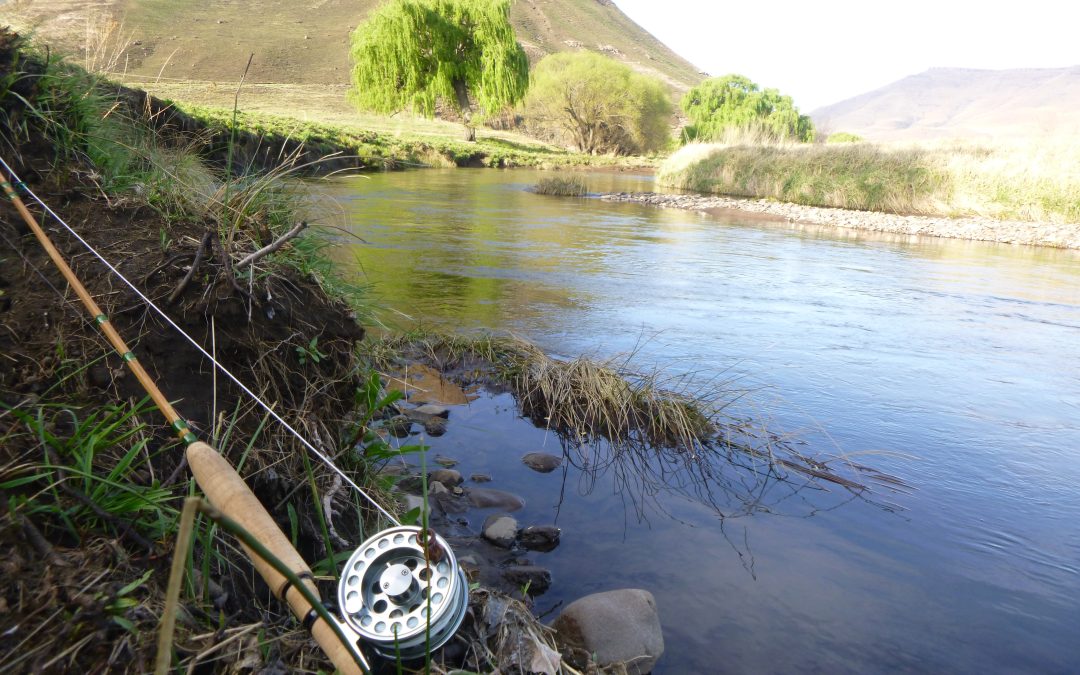My purist friend, Rory, painted such an indulgent picture of Trout fishing in his article that I was compelled to procure a delicate split cane rod and head for the Eastern Cape Highlands to immerse myself in some river fishing in spectacular countryside.
The hamlet of Rhodes was my base for the weekend and thanks to Margie at Rhodes Tourist Information Centre (www.rhodesinfo.co.za) securing accommodation and beats, through Wild Trout Association (www.wildtrout.co.za ), for the Saturday afternoon and Sunday was a doddle.
I found myself on the last day of September fishing the Newham beat of the Bell River just outside of Rhodes. Early spring rains had blessed the Eastern Cape Highlands just the week before and the Bell River was running high and fast. Moving downstream from the bridge at first partly scouting the Newham beat and partly feeling and learning the idiosyncrasies of a split cane rod I identified a gentle riffle on the inside bend just off from a gravel deposit reachable by a great casting spot.
The Newham beat is short and with the sun dancing on the horizon I turned and made my way back upstream. Now supported by a hatch I targeted the riffle water just off the inside of the bend. Shortly the familiar tug of interest saw the first Rainbow of the evening getting off the hook. Not so with the next cast. Slow going maybe, but as the sun tucked itself away behind the mountains the action heated up. Moving further upstream I found the pool below the bridge hopping with activity and sight casted for another couple Rainbows.
In a fly fishing world of fast action rods, aggressive fly lines and angry looking flies the split cane rod, floating line, silk leader and dainty dry flies are the perfect antidote. If fast action rods charge you with American bravado and a yahoo spirit then the slow, methodical, almost chronologic action of split cane fills you with the regal serenity of British confidence!
Fly fishing with the split cane rod demanded a studied discipline that was neither rigorous nor oppressive; but rather a relaxed patience – I was punished with a snafu and snarl the moment I hurried my casts or line release. And the reward for this mindset change? Well, the most delicate of presentations – dry flies seem to alight the water with a natural care, the exhilaration that comes from hooking smaller fish on lighter tackle and did I mention the opportunity to appreciate the working end of fine craftmanship?
The tech-bits shared:
I was fishing with:
Rod and reel: Split cane 8”2’ 2WT, line was held by a Xplorer XPLA 2/3wt reel.
Line, leader and tippet: RIO DT2F floating line followed by furled leader and 6 x tippet.
Flies: Royal Wulff (size 13-14)

